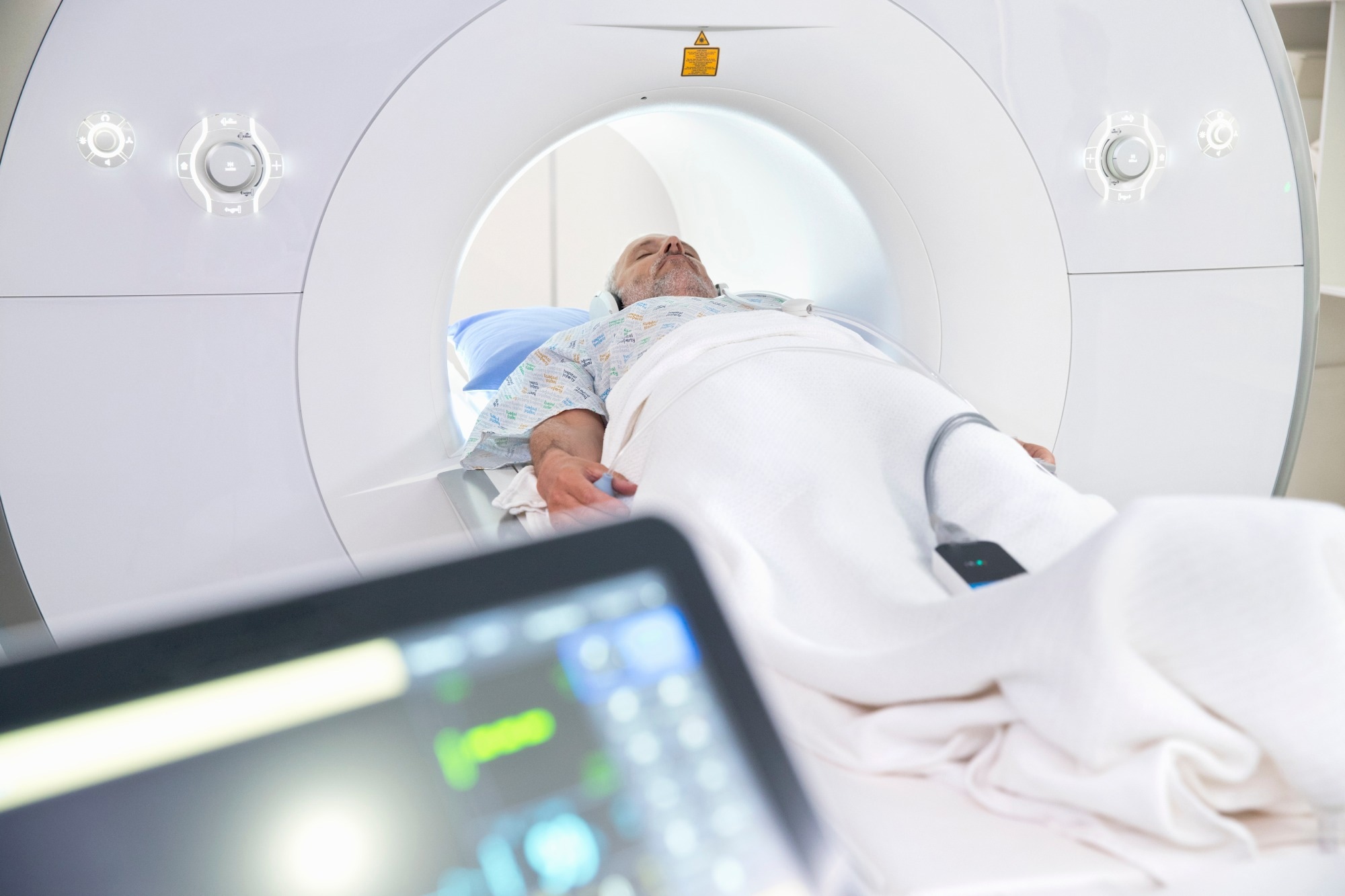Harnessing the power of AI, researchers unlock the potential of whole-body MRI to predict health risks, paving the way for smarter, personalized prevention strategies.
Study: Deep learning-based body composition analysis from whole-body magnetic resonance imaging to predict all-cause mortality in a large western population. Image Credit: Juice Flair / Shutterstock
In a recent study published in the journal eBioMedicine, researchers in Germany and the United States developed and validated a deep learning framework for automated volumetric body composition analysis from whole-body Magnetic Resonance Imaging (MRI) and assessed its prognostic value for predicting all-cause mortality in a large Western population.
Background
Body composition measures, including adipose tissue compartments and skeletal muscle, have shown strong associations with clinical outcomes and are emerging as important imaging biomarkers for improving personalized risk assessment. However, their routine quantification from imaging modalities like MRI remains limited in clinical workflows due to time and resource constraints. With its superior ability to differentiate tissue types and assess their distribution, MRI offers significant potential for comprehensive body composition analysis.
The study highlights that manual quantification is labor-intensive, while automated approaches could overcome these barriers. Fully automated, Artificial Intelligence (AI)-driven volumetric approaches could overcome current limitations, enabling more accurate and scalable assessments. These findings emphasize the importance of developing standardized tools to ensure clinical applicability across diverse populations.
About the Study
The study utilized data from two extensive population-based cohort studies: the UK Biobank (UKBB), involving participants aged 45-84 years, and the German National Cohort (NAKO), with participants aged 40-75 years. Both studies collected comprehensive clinical data and employed a detailed MRI protocol, including axial whole-body T1-weighted Three-Dimensional Volumetric Interpolated Breath-hold Examination (3D VIBE) Dixon sequences, used for body composition analysis. Ethical approvals were obtained, and informed consent was secured from all participants.
The primary aim was to develop a deep learning framework for automated quantification of volumetric body composition measures, such as subcutaneous adipose tissue (SAT), visceral adipose tissue (VAT), skeletal muscle (SM), skeletal muscle fat fraction (SMFF), and intramuscular adipose tissue (IMAT), using whole-body MRI. The framework’s performance was evaluated in the UKBB, focusing on its prognostic value for all-cause mortality. The study also aimed to assess correlations between whole-body volumetric measures and traditional single-slice body composition estimation at the L3 vertebra.
The deep learning model utilized Dixon sequence imaging inputs to generate segmentation masks, enabling quantifying volumetric and single-slice body composition. Experienced radiologists performed manual annotations for model training and validated them independently. Statistical analyses included survival modeling and correlation assessments, employing harmonized datasets to minimize distributional differences.
Study Results
The UKBB cohort included 36,317 participants (18,777 females and 17,540 males) with a mean age of 65.1 ± 7.8 years and a mean body mass index (BMI) of 25.9 ± 4.3 kg/m². Body composition analysis revealed higher volumetric subcutaneous adipose tissue (VSAT), skeletal muscle fat fraction (VSMFF), and intramuscular adipose tissue (VIMAT) in females, while males exhibited greater visceral adipose tissue (VVAT) and skeletal muscle volume (VSM) (all p < 0.0001). Similar trends were observed among the 23,725 participants in the NAKO, whose mean age was 53.9 ± 8.3 years with a mean BMI of 27 ± 4.7 kg/m², as well as in single-slice area body composition measures at the L3 vertebra for both cohorts.
During a median follow-up period of 4.77 years in the UKBB, 634 deaths (1.7%) were recorded. Kaplan-Meier survival curves demonstrated that participants in the lowest 10th percentile of VSM and the highest 10th percentiles of VSMFF and VIMAT exhibited significantly higher mortality rates (log-rank p < 0.0001). Adjusted Cox regression analyses revealed that lower VSM (aHR: 0.86, 95% CI [0.81–0.91], p < 0.0001) was associated with reduced mortality risk, while higher VSMFF (aHR: 1.07, 95% CI [1.04–1.11], p < 0.0001) and VIMAT (aHR: 1.28, 95% CI [1.05–1.35], p < 0.0001) were linked to increased risk. In contrast, volumetric VSAT and VVAT measures showed no substantial association with mortality after adjusting for traditional risk factors.
Analysis of single-slice area measures at L3 yielded results consistent with volumetric measures, with lower skeletal muscle area (ASM) and higher fat fraction (ASMFF) and intramuscular adipose tissue (AIMAT) associated with mortality. However, after full adjustment, these associations weakened for ASM and AIMAT. Reclassification analyses demonstrated that volumetric measures were more effective at identifying high-risk individuals than single-slice measures, as evidenced by significant net reclassification improvement for skeletal muscle (NRI = 0.053, 95% CI [0.016–0.089]).
Correlation analysis between volumetric whole-body and single-slice measures showed strong concordance at specific vertebral levels, such as L3 for VAT (R = 0.892) and SM (R = 0.944). These findings were replicated in the NAKO cohort, though the correlation varied significantly by BMI and sex strata. The deep learning framework demonstrated high accuracy, with Dice coefficients exceeding 0.86 and strong agreement between manual and automated segmentation results (r > 0.97).
Conclusions
This study developed an automated deep learning framework for whole-body MRI-based body composition analysis and evaluated its prognostic value for mortality prediction in over 30,000 individuals. Volumetric measures, including SM, SMFF, and IMAT, were independent predictors of mortality, outperforming traditional single-slice approaches, which showed variable correlations influenced by sex and BMI. Despite these strengths, the study acknowledged limitations, such as cohort demographics primarily representing Western populations and limited follow-up duration, which could impact generalizability.
Future research should explore the clinical integration of volumetric MRI-based analysis across diverse populations and imaging protocols.





